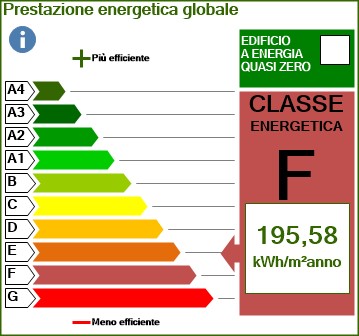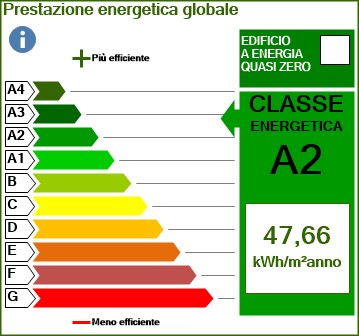AUTHOR: Andrea Palombo
TUTORS: Dott. Ing. A. Zichi – Arch. C. Hugony
INTERNSHIP: Teicos UE s.r.l.
MASTER: Master in “Edifici e Infrastrutture Sostenibili” a.a 2019/2020
Sono passati ormai più di 50 anni da uno degli scatti fotografici più famosi della storia dell’uomo. Nella notte di Natale del ’68 l’astronauta William Alison Anders, in viaggio per osservare il lato oscuro della luna con l’Apollo 8, scattò un fermo-immagine della Terra che sorgeva dietro la superficie lunare, il primo Earthrise ammirato da occhio umano.
La terra appariva meravigliosa ma cambiando prospettiva questa appariva anche fragile e sospesa in un universo sconfinato. D’un tratto ci si rese conto che la Terra era un bene che doveva essere preservato e fu proprio da questo scatto
che nacquero i primi movimenti ambientalisti per la salvaguardia del pianeta.
Il percorso non fu semplice, bisognò aspettare diversi anni prima che a livello mondiale si prendessero misure concrete ma oggi la tutela delle risorse e più in generale la tutela dell’ambiente in cui viviamo sono ormai tematiche di importanza centrale.
Soltanto nel ’97 con il Protocollo di Kyoto furono definite delle strategie concrete e furono fissati degli obiettivi che dovevano essere perseguiti per un futuro più green e sostenibile per il nostro pianeta.
Sulla stregua di questo, con il Piano Nazionale Integrato per l’Energia e il Clima (PNIEC) l’Italia ha stabilito gli obiettivi nazionali prima al 2020, successivamente al 2030 e al 2050 sull’efficienza energetica, sulle fonti rinnovabili e sulla riduzione delle emissioni di CO2. In particolare si prefigge l’obiettivo di una decarbonizzazione profonda del settore energetico entro il 2050 attraverso anche l’utilizzo di una serie di strumenti come gli incentivi fiscali.
Il PNIEC riconosce inoltre il ruolo chiave ricoperto dal cittadino e dalle imprese per i quali è necessario che diventino protagonisti oltreché beneficiari della trasformazione energetica.
È stato difatti dimostrato come una gestione corretta ed un uso attento dell’edificio riqualificato comportino enormi benefici e maggiori risparmi. A tal proposito, informare e formare l’utente finale ad un uso ed una gestione corretta dell’edificio riqualificato assume un’importanza rilevante.
La Teicos UE ha sviluppato con il Politecnico di Milano ed il Comune di Milano un percorso di co-progettazione, chiamato percorso CoREN©, che si pone l’obiettivo di formare i condòmini sugli aspetti legati alla riqualificazione energetica e ad una gestione corretta dell’edificio riqualificato seguendoli fino alle fasi successive al completamento dei lavori. Inoltre, attraverso diversi incontri, i condòmini con i tecnici incaricati
definiscono un intervento di riqualificazione per il proprio condominio che sia quanto più calzante possibile con le loro esigenze e contestualmente garantisca il rispetto dei requisiti previsti per l’accesso ad eventuali detrazioni.
Questo comporta nella fattispecie un percorso armonioso tra l’azienda incaricata e i condòmini interessati dall’intervento di riqualificazione che va dalle prime fasi di progettazione, alla fase di esecuzione dei lavori fino alla fase di monitoraggio dei risultati.
Il presente lavoro di tesi si pone l’obiettivo di mostrare la proposta di progetto presentata per la riqualificazione energetica di un condominio degli anni ’60 nell’hinterland di Milano, le criticità incontrate, le esigenze dei condòmini e le soluzioni di progetto scelte, attraverso i passaggi definiti dal percorso CoREN© che garantiscano una corretta formazione ed il raggiungimento dei requisiti imposti per l’accesso alla detrazione fiscale introdotta dall’art. 119 del Decreto Legge n° 34/2020 che ha introdotto una detrazione pari al 110% oltreché dalla norma cogente nella regione Lombardia.
FOR INTERNATIONAL STUDENTS:
More than 50 years have passed since one of the most famous photographs in human history. On Christmas night of ’68, during a journey to observe the dark side of the moon with Apollo 8, astronaut William Alison Ander took a still image of the Earth rising behind the lunar surface, the first Earthrise admired by the human eye. The earth appeared wonderful but changing perspective it also appeared fragile and suspended in a boundless universe. Suddenly it was realized that the Earth was an asset that had to be preserved and it was precisely from this shot that the first
environmental movements for the protection of the planet were born.
The path was not easy, it took several years before concrete measures were taken on a global level, but today the protection of resources and, more generally, the protection of the environment in which we live are now issues of central importance. It was not until 1997, with the Kyoto Protocol, that concrete strategies were defined and targets set for a greener and more sustainable future for our planet.
On the same basis, with the Integrated National Plan for Energy and Climate (PNIEC), Italy has established national objectives before 2020, after 2030 and 2050 on energy efficiency, renewable sources and the reduction of CO2 emissions. In particular, it aims to achieve a deep decarbonisation of the energy sector by 2050 through the use of a number of instruments such as tax incentives.
The PNIEC also recognises the key role played by citizens and businesses, who need to become protagonists as well as beneficiaries of the energy transformation. It has been demonstrated that proper management and careful use of the upgraded building brings enormous benefits and savings. In this context, informing and training the end-user on the correct use and management of the upgraded building is of great importance. Teicos UE has developed with the Politecnico di Milano and the Municipality of Milan a co-design path, called CoREN© path, which aims to train the owners on the aspects related to energy requalification and to a correct management of the requalified building, following them until the phases following the completion of the works.
In addition, through a number of meetings, the owners and the technicians in charge define a renovation project for their block of flats that meets their needs as closely as possible, while at the same time ensuring that the requirements for accessing any deductions are met.
In this case, this involves a harmonious path between the company in charge and the condominiums involved in the redevelopment which goes from the early planning stages, to the execution phase of the works up to the monitoring phase of the results.
The aim of this thesis is to show the project proposal presented for the energy redevelopment of a 1960s condominium in the hinterland of Milan the critical issues encountered, the needs of the condominiums and the project solutions chosen, through the steps defined by the CoREN© path that guarantee proper training and the achievement of the requirements imposed for access to the tax deduction introduced by art. 119 of Law Decree n ° 34/2020 which introduced a deduction equal to 110% as well as from the mandatory law in the Lombardy region.




